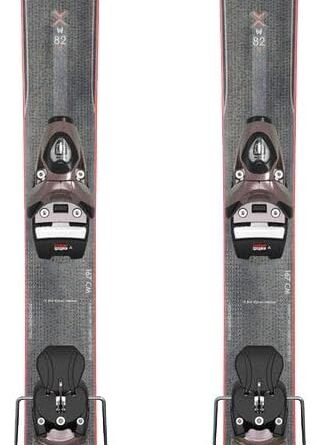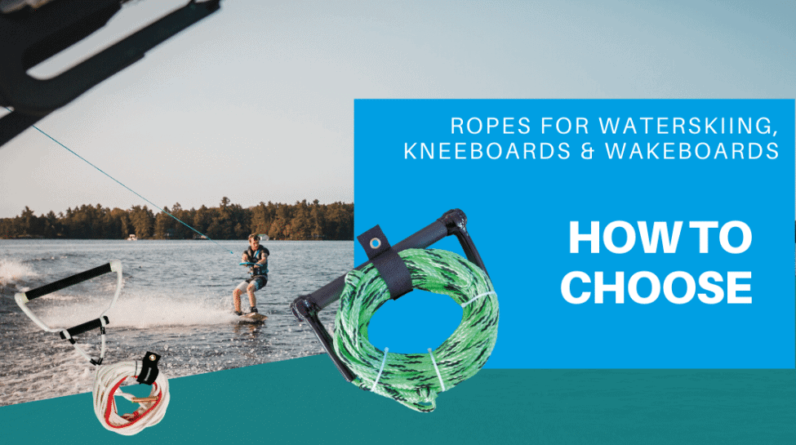
Are you an avid water skier looking to perfect your slalom skiing skills? If so, then choosing the right water ski rope is essential. In this comprehensive guide, we will explore the factors to consider when selecting the perfect water ski rope for slalom skiing tricks. From the size to the style, we will provide you with all the necessary information to make an informed decision. So get ready to hit the water and take your slalom skiing to new heights with the perfect water ski rope.
The Importance of Choosing the Right Water Ski Rope
When it comes to water skiing, choosing the right rope is crucial for enhancing your performance and ensuring your safety on the water. A water ski rope serves as the vital connection between the skier and the boat, providing the necessary control and stability needed for a successful outing. With so many options available, it’s essential to understand the factors to consider when selecting the ideal water ski rope.
Enhancing Performance and Safety
One of the primary reasons why choosing the right water ski rope is crucial is its impact on your overall performance. A well-suited rope can greatly enhance your skiing experience by allowing for smoother turns, better control, and improved stability. On the other hand, a poorly chosen rope can lead to a lack of control, resulting in an unstable ride and increased risk of accidents.
Providing Proper Control and Stability
A properly chosen water ski rope provides you with the control and stability required to navigate the water confidently. It allows you to maintain your balance while making sharp turns and tricks, ensuring that you stay safe throughout your water skiing adventure. Additionally, the right rope helps absorb the tension created by the boat’s pull, minimizing the strain on your arms and enabling you to ski for longer periods without fatigue or discomfort.
Factors to Consider When Choosing a Water Ski Rope
To choose the perfect water ski rope for your needs, consider the following factors:
Rope Length
The length of the rope plays a significant role in determining the skiing experience. Longer ropes provide more space between you and the boat, giving you a wider swing arc for carving turns and performing tricks. Meanwhile, shorter ropes allow for sharper turns and better control. Generally, slalom skiers opt for longer ropes, while trick skiers prefer shorter ones. Consider your skiing style and skill level when selecting the appropriate length.
Rope Diameter
Rope diameter is another critical aspect to consider. Thicker ropes offer greater strength and durability, making them ideal for advanced skiers who put their equipment through more rigorous use. Thinner ropes, on the other hand, provide a better grip and allow for improved maneuverability, making them suitable for trick skiers who prioritize control and precision.
Stretchability
The stretchability of a water ski rope determines its elasticity. Some ropes are designed to stretch, absorbing the tension created by the boat’s pulls and offering a smoother ride. Elastic ropes can be forgiving and reduce the strain on skiers’ bodies. Non-elastic ropes, on the other hand, provide a more direct and responsive feel, making them preferred by professionals who require precise control. Consider your personal preference and skiing style when deciding on the level of stretchability you desire.
Handle Style and Grip
The handle of a water ski rope is just as important as the rope itself. Different handle styles and grips offer varying levels of comfort and control. Look for handles with ergonomic designs that fit comfortably in your hand. The material of the handle can affect the grip, with options ranging from rubber to foam. Consider the texture and feel of the handle, ensuring it provides a secure grip even when wet.
Material
Water ski ropes are made from various materials, each offering different characteristics. Polypropylene ropes are widely used due to their affordability and durability. Polyethylene ropes are known for their ability to float, making them easier to retrieve from the water. Dyneema ropes are incredibly strong, yet lightweight, providing excellent performance. Hybrid materials combine the best qualities of different materials, catering to specific needs. Consider the advantages and disadvantages of each material before making your choice.
Weight
The weight of a water ski rope can affect its performance and durability. Lightweight ropes are often preferred for their ease of handling and reduced strain on the skier. On the other hand, heavy-duty ropes offer increased strength and can withstand more demanding skiing conditions. Consider your skiing style and the conditions in which you’ll be skiing when determining the appropriate weight for your rope.
Color
While it may seem like a minor consideration, the color of your water ski rope can play a role in visibility. Brightly colored ropes can be easier to spot in the water, making them advantageous for safety purposes. Additionally, choosing a rope color that stands out against the water can make it easier for the boat driver to track your movements and adjust their speed accordingly.
Floatation
Floatation is an essential factor to consider if you’re looking for a water ski rope that won’t sink in the water. This characteristic is particularly important for beginners or anyone who may need to release the rope while in the water. Ropes with high floatation properties are easier to retrieve and less likely to tangle.
Durability
Durability is crucial for any piece of equipment, and water ski ropes are no exception. A durable rope can withstand the stresses and strains of skiing without compromising its integrity. Look for ropes that are resistant to UV rays, abrasion, and general wear and tear from exposure to water and harsh weather conditions.
Budget
Lastly, consider your budget when choosing a water ski rope. Ropes come in various price ranges, and it’s essential to ensure that the one you select offers the right balance of quality and affordability. Remember, investing in a high-quality rope is a worthwhile long-term investment in your skiing experience.
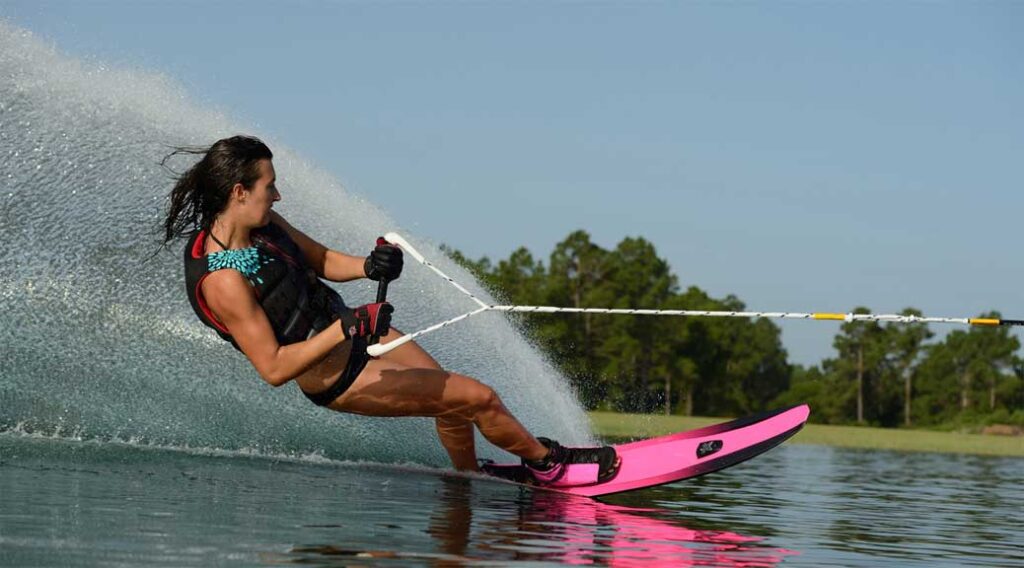
This image is property of www.tallingtonlakesproshop.com.
Understanding Different Types of Water Ski Ropes
Different types of water ski ropes are designed to cater to specific skiing activities and skill levels. Understanding these variations will help you make an informed decision when choosing the right rope for your needs. Here are the main types of water ski ropes:
Slalom Ropes
Slalom ropes are intended for skiers who participate in slalom skiing, which involves skiing on one ski. These ropes are typically longer, ranging from 60 to 75 feet, and offer minimal stretchability. Slalom ropes are designed to provide skiers with the control and stability required for precise turns and carving.
Trick Ropes
Trick ropes are specifically designed for trick skiing, where skiers perform various tricks and stunts on the water. These ropes are shorter, typically between 45 and 55 feet, and offer minimal stretchability. The shorter length allows skiers to have greater control and maneuverability while performing complex tricks.
Combo Ropes
Combo ropes are versatile and ideal for beginner and intermediate skiers. These ropes are often adjustable in length, ranging from 60 to 75 feet, making them suitable for various skiing activities. Combo ropes usually have moderate stretchability to provide a forgiving and comfortable skiing experience.
Wakeboard Ropes
Wakeboard ropes cater to wakeboarding, a popular water sport that combines elements of water skiing, snowboarding, and surfing. These ropes are usually longer, ranging from 55 to 75 feet, and offer substantial stretchability. The added stretch allows wakeboarders to perform aerial tricks and maneuvers with more flexibility.
Ski Rope Accessories
In addition to the different types of water ski ropes, there are also various accessories available to enhance your skiing experience. These may include handle extensions, which provide additional grip options, or rope management tools, such as rope keepers or winders, to keep your ropes organized and tangle-free.
Choosing the Right Rope Length
The length of your water ski rope is a crucial factor that can greatly impact your skiing experience. The appropriate rope length depends on the specific skiing activity you’ll be engaging in and your skill level. Here’s a breakdown of the recommended rope lengths for different skiing disciplines:
Slalom Skiing
For slalom skiing, where skiers use a single ski, longer ropes are generally preferred. The recommended rope length for slalom skiing ranges from 60 to 75 feet. A longer rope allows skiers to have a wider swing arc, enabling them to carve turns with more precision and ease.
Trick Skiing
Trick skiing, which involves performing various tricks and stunts on the water, requires a shorter rope length to provide better control and maneuverability. The recommended rope length for trick skiing typically ranges from 45 to 55 feet. A shorter rope allows skiers to execute complex tricks with greater precision.
Jump Skiing
In jump skiing, where skiers perform long-distance jumps over ramps, the rope length plays a critical role in generating sufficient speed and momentum. The recommended rope length for jump skiing is typically longer, ranging from 75 to 85 feet. The extra length provides skiers with the necessary space to build up speed and execute impressive jumps.
Combo Skiing
Combo skiing involves a combination of slalom skiing and trick skiing, making an adjustable rope length preferable. Combo ropes typically offer an adjustable range from 60 to 75 feet, allowing skiers to adapt the length based on their preferred activity. This versatility makes combo ropes suitable for beginner and intermediate skiers who enjoy a variety of skiing styles.
Wakeboarding
In wakeboarding, where riders perform jumps and tricks behind a boat’s wake, the rope length is typically longer compared to other skiing activities. The recommended rope length for wakeboarding falls between 55 and 75 feet. The longer rope allows wakeboarders to utilize the boat’s wake for performing aerial maneuvers and tricks.
Boat Size and Speed Considerations
When selecting the rope length, it’s essential to consider the size of the boat and its speed capabilities. Smaller boats may require shorter ropes to maintain appropriate tension between the skier and the boat. Additionally, faster boats may necessitate longer ropes to allow the skier sufficient space to maneuver and carve turns effectively.
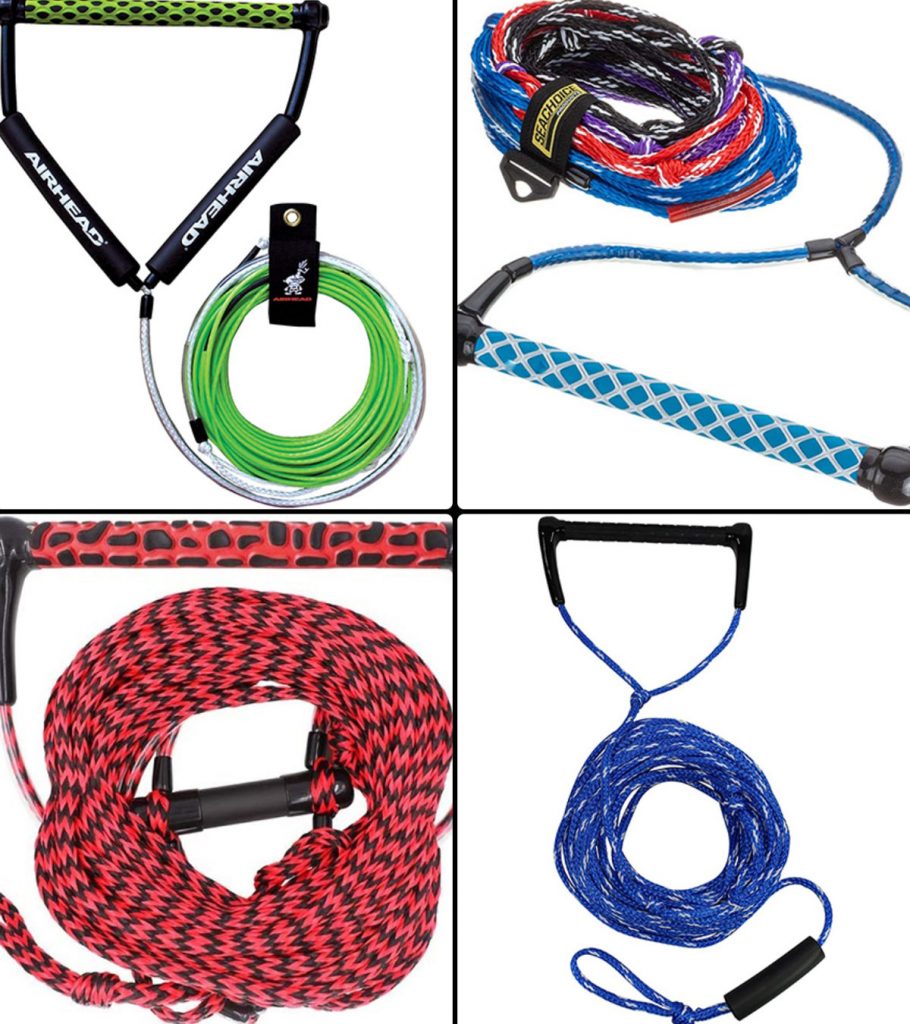
This image is property of www.momjunction.com.
Determining the Ideal Rope Diameter
The diameter of a water ski rope largely affects its performance, grip comfort, and durability. Choosing the appropriate rope diameter is crucial to ensure a safe and enjoyable skiing experience.
Grip Comfort and Control
Thicker ropes generally offer a more comfortable grip with increased surface area. This can be especially beneficial for skiers who prefer a more secure hold or have larger hands. Thicker ropes also provide better control, especially when making tight turns or executing complex tricks.
Thinner ropes, on the other hand, offer a more tactile feel and enhanced maneuverability. Skiers who prioritize precision and quick responses often prefer thinner ropes. These ropes allow for better grip sensitivity and can provide a more direct connection between the skier and the boat.
Rope Strength and Durability
Rope diameter also influences the strength and durability of the rope. Thicker ropes tend to be stronger and more resistant to wear and tear. Skiers who frequently engage in aggressive skiing maneuvers or subject their equipment to rigorous use may opt for thicker ropes to ensure maximum durability and longevity.
Thinner ropes, although not as strong, can still offer sufficient durability for skiers who prioritize weight reduction and maneuverability. It’s important to balance your skiing needs with the rope’s diameter and strength to select the optimal option.
Evaluating the Stretchability of the Rope
The stretchability, or elasticity, of a water ski rope determines the level of forgiveness and response it provides. Understanding the differences between elastic and non-elastic ropes can help you select the most suitable option for your skiing style.
Elastic Ropes
Elastic ropes, also known as “stretch” ropes, have the ability to absorb and dampen the tension created by the boat’s pull. This elasticity softens the jerks and sudden forces experienced during skiing, resulting in a smoother and more forgiving ride. Elastic ropes are often preferred by beginner and intermediate skiers who value comfort and reduced strain on their bodies.
Non-Elastic Ropes
Non-elastic ropes, also referred to as “non-stretch” or “zero-stretch” ropes, do not possess the same level of elasticity as their counterparts. These ropes offer a more direct and immediate response to the boat’s pull, allowing for precise control and faster reactions. Non-elastic ropes are commonly favored by professional skiers who require maximum control and responsiveness for executing complex maneuvers.
Benefits and Drawbacks of Stretchability
The level of stretchability you choose ultimately depends on your personal preference and skiing style. Elastic ropes provide added forgiveness and are ideal for skiers who prioritize comfort and reduced strain. They absorb jerks and sudden forces, which can be especially beneficial for beginners who are still developing their skiing skills.
Non-elastic ropes, on the other hand, offer a more direct feel and excellent responsiveness. These ropes are advantageous for skiers who require precise control and want to maintain a strong connection with the boat throughout their runs. The absence of stretch also makes non-elastic ropes ideal for slalom skiing, where consistency and stability are crucial.

This image is property of www.tallingtonlakesproshop.com.
Assessing Handle Style and Grip
The handle of your water ski rope is the point of connection between your hands and the rope itself. It is essential to evaluate the handle style, design, and grip to ensure a comfortable and secure skiing experience.
Handle Design
Water ski rope handles come in various designs, ranging from straight bars to contoured shapes. Straight bar handles offer simplicity and versatility, accommodating different riding stances and preferences. Contoured handles, on the other hand, are ergonomically shaped to fit the natural curvature of the hand. These handles often provide enhanced comfort and help reduce hand fatigue during long skiing sessions.
Handle Material
Another crucial consideration is the material used for the handle. Most water ski rope handles are made of either rubber or foam. Rubber handles offer good grip and durability, making them suitable for skiers who prioritize sturdiness and longevity. Foam handles, on the other hand, are known for their comfort and buoyancy. They provide a softer and more forgiving grip, ideal for skiers who value reduced strain on their hands.
Grip Comfort and Texture
The comfort and texture of the handle grip are vital for ensuring a secure hold during skiing. Look for handles that feature textured surfaces or molded finger grooves, as these enhance grip stability even when wet. The handle grip should feel comfortable and secure in your hand, allowing you to maintain control and minimize the risk of slippage.
Evaluating handle style and grip is crucial to finding a water ski rope that suits your skiing style, hand size, and personal preferences. Trying out different handle designs and materials can help you determine the most comfortable and secure option for your needs.
Comparing Different Rope Materials
Water ski ropes are available in various materials, each offering different characteristics. Understanding the differences between these materials can assist you in selecting the most suitable rope for your skiing needs.
Polypropylene
Polypropylene ropes are one of the most popular options due to their affordability, durability, and versatility. These ropes are resistant to UV rays and have good abrasion resistance, which ensures a longer lifespan. Polypropylene is also buoyant, meaning it remains afloat on the water, making it easier to retrieve and reducing the risk of tangling. If you’re looking for a cost-effective and reliable option, polypropylene ropes are a great choice.
Polyethylene
Polyethylene ropes are known for their excellent buoyancy and ability to float on the water’s surface. This makes them highly visible and easy to spot, reducing the risk of entanglement or accidental damage. Polyethylene ropes are also resistant to UV rays and have good abrasion resistance, ensuring durability over time. If visibility and floating capability are important factors for your skiing experience, consider opting for a polyethylene rope.
Dyneema
Dyneema ropes offer superior strength-to-weight ratios, making them incredibly strong yet lightweight. These ropes are resistant to UV rays, water, and various chemicals, ensuring high durability and reliability. Dyneema’s non-stretch properties provide excellent responsiveness and precise control during skiing. Despite their higher cost compared to other materials, Dyneema ropes are favored by professional skiers and enthusiasts who prioritize performance and longevity.
Hybrid Materials
Some water ski ropes utilize hybrid materials, combining the strengths and benefits of different fibers. These blends often result in ropes that offer optimal performance, durability, and handling characteristics. Hybrid ropes can be an excellent choice for skiers who want a well-rounded rope that caters to specific needs or preferences.
Comparing the advantages and characteristics of different rope materials will help you make an informed decision based on your skiing style, durability requirements, and budget.
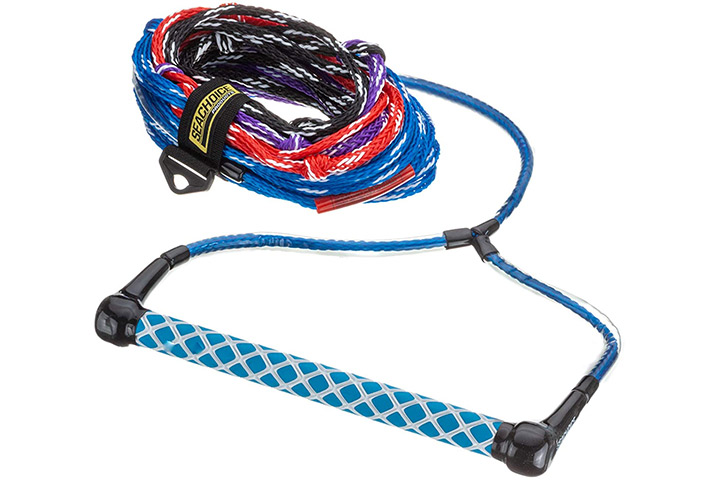
This image is property of www.momjunction.com.
Considering the Weight of the Rope
Weight is an essential factor to consider when choosing a water ski rope. The rope’s weight can influence your overall skiing experience and performance.
Lightweight Ropes
Lightweight ropes offer advantages in terms of ease of handling and reduced strain on the skier. They are particularly beneficial for skiers who engage in long skiing sessions or complex tricks that require quick and fluid movements. Lightweight ropes can contribute to less fatigue and increased enjoyment during skiing, making them a popular choice among recreational skiers.
Heavy-duty Ropes
Heavy-duty ropes are designed to withstand more rigorous skiing conditions and aggressive maneuvers. These ropes offer increased strength and durability, making them suitable for skiers who put their equipment through more intense use. While heavy-duty ropes may be slightly more challenging to handle, they provide added security and longevity for those seeking a reliable and robust option.
It’s essential to strike a balance between rope weight and your specific skiing needs. Consider your skill level, planned activities, and preference for weight reduction to determine the most appropriate option for you.
Setting Your Budget
Considering your budget is a practical and necessary step when choosing a water ski rope. Ropes come in various price ranges, and finding the right balance between cost and quality is important.
Price Range
Water ski ropes vary in price depending on factors such as materials, design, and brand. Generally, high-performance ropes made from premium materials command higher prices. However, there are also budget-friendly options available that offer good durability and functionality without breaking the bank. It’s essential to determine your budget beforehand and explore ropes within that range to make an informed decision.
Balancing Cost and Quality
While it may be tempting to opt for the most affordable option, it’s essential to consider the quality and performance of the rope. Investing in a high-quality rope ensures better durability, performance, and safety while skiing. A reliable rope will last longer, reducing the frequency of replacements and potentially saving you money in the long run. Evaluate the features and benefits offered by different ropes within your budget to strike the right balance between cost and quality.
In conclusion, choosing the right water ski rope is essential for enhancing your performance, ensuring safety, and optimizing your overall skiing experience. Consider factors such as rope length, diameter, stretchability, handle style and grip, material, weight, and budget to select the most suitable rope for your skiing style and requirements. With the right rope in hand, you’ll be ready to hit the water and enjoy countless exhilarating skiing adventures.

This image is property of boatworld.co.uk.






